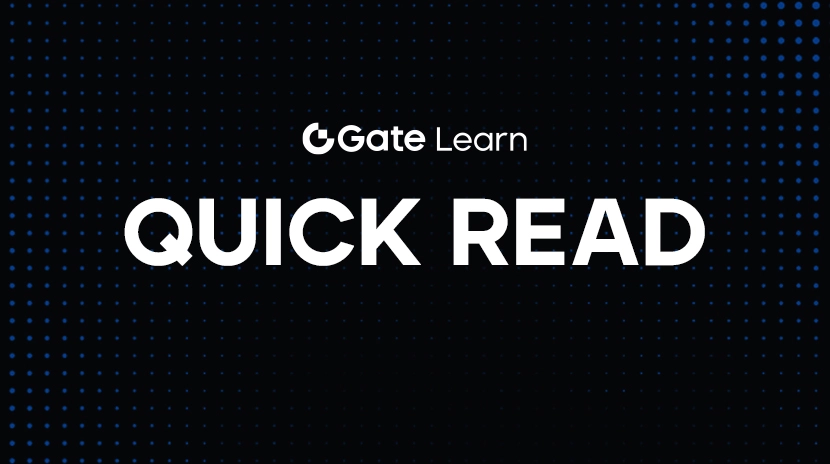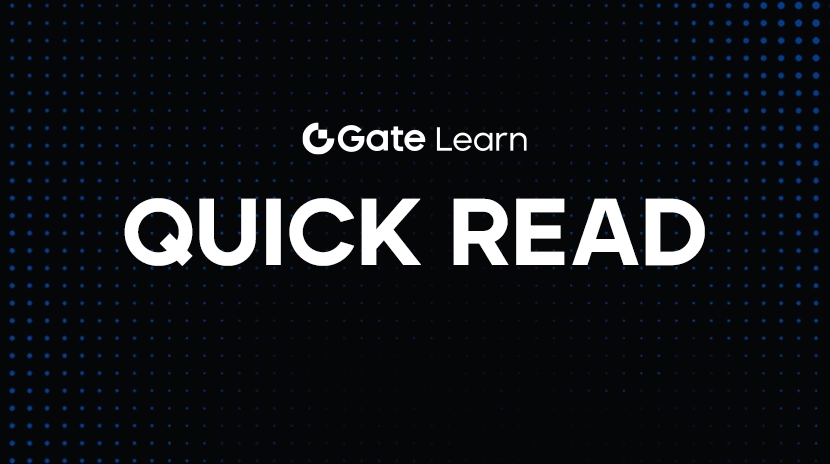$WAL (Walrus): Revolutionizing Decentralized Data Storage on the Sui Network
In the ever-changing world of blockchain technology, decentralized data storage has emerged as a critical infrastructure for managing rich media content, large text files, videos, images, and audio. Walrus, a groundbreaking decentralized data storage network built on the Sui Network. By splitting data into small pieces and distributing them across multiple nodes globally, Walrus ensures fast, reliable, and secure data retrieval even in the event of network failures. In this article, we dive deep into $WAL (Walrus), exploring its innovative technology, use cases, market metrics, tokenomics, and why 2025 is the right moment to launch Walrus.
$WAL (Walrus) is poised to transform the decentralized data storage landscape. By combining innovative encoding algorithms, programmable storage capacity, and the robust, high-performance capabilities of the Sui Network, Walrus offers a next-generation solution for storing large data and rich media content in a secure, efficient, and cost-effective manner.
As the project launches on March 26, 2025, and tokens begin to circulate, the Walrus network will empower developers, users, and enterprises to harness the full potential of decentralized storage. With its unique incentive structure and seamless integration with Sui, Walrus represents a significant step forward in ensuring data availability, authenticity, and auditability—all at a low cost and with minimal complexity.
Introduction: The Need for Decentralized Storage
Traditional cloud storage systems rely on centralized servers that store full copies of data. While this approach has its merits, it also introduces challenges such as single points of failure, high storage costs, and potential data censorship. In contrast, decentralized storage protocols like Walrus offer an alternative by splitting data into small, manageable pieces and dispersing them across a global network of nodes. This model provides enhanced data availability, resilience, and security, making it particularly suited for today’s digital economy where massive volumes of data and rich media content are the norm.
Blockchain systems support decentralized computation using State Machine Replication (SMR), requiring validators to fully replicate data across the network. This method, though vital for computing, is less efficient for storing large binary objects (blobs). Early decentralized storage networks, such as IPFS, emerged to address this challenge. However, as the industry evolved, the need for a more efficient, scalable, and secure storage solution became apparent—leading to the development of Walrus.

Image Source: Twitter X
What Is Walrus?
Walrus is a decentralized data storage network that revolutionizes how data and rich media content are stored and retrieved. Unlike conventional cloud storage, Walrus leverages a distributed architecture to break data into small pieces and distribute them across numerous nodes worldwide. This not only ensures high availability but also maintains data integrity and security even if some nodes go offline.
Key Innovations of Walrus
Decentralized Architecture: By fragmenting data and storing it on multiple nodes, Walrus ensures that if parts of the network experience downtime, the complete data remains accessible.
Innovative Encoding Algorithms: Walrus uses advanced encoding techniques to provide fast write and read speeds, enabling efficient storage and retrieval of large volumes of data.
Programmable Storage Capacity: Built on the Sui Network, Walrus’s storage capacity is programmable via smart contracts. This allows for dynamic management and extension of storage space based on user demand.
Data Deletion Option: Unlike many decentralized storage solutions, Walrus offers users the option to delete data they no longer wish to store, providing flexibility and control over their digital assets.
The Evolution of Decentralized Storage
Decentralized storage systems have evolved significantly over the past decade. Early networks like Filecoin and Arweave pioneered the concept of blockchain-based storage, each with its own advantages and limitations. Filecoin relies on a full replication model, ensuring complete availability but with high storage overhead. Arweave offers permanent storage but comes with challenges related to scalability and cost.
Walrus represents the next evolution in decentralized storage by addressing these challenges head-on. It combines the best practices of its predecessors while leveraging the cutting-edge capabilities of the Sui Network. The result is a storage solution that is secure, fast, and highly efficient—making it ideal for applications ranging from NFT data storage to decentralized social media and blockchain gaming.
Why 2025 Is the Right Moment to Launch Walrus
The timing for launching Walrus in 2025 is strategic and well-founded. Decentralized storage was once a concept ahead of its time, hindered by the limitations of early transaction systems. As noted by industry veteran @GDanezis over 20 years ago, sustainable decentralized storage was challenging due to the lack of an efficient transaction system. Today, that barrier has been overcome with the advent of the Sui Network.
Sui Network: The Perfect Match for Walrus
The Sui Network offers the next-generation transaction system needed for decentralized storage:
Low Latency and High Bandwidth: Sui provides the speed and capacity necessary for fast, efficient data writes and reads.
Cost-Effective Transactions: The low transaction fees on Sui make it feasible to manage large volumes of data without incurring prohibitive costs.
Smart Contract Integration: Sui’s support for smart contracts allows Walrus to programmatically manage storage capacity, assign ownership, and handle payments—all of which are critical for a scalable and efficient storage solution.
This combination creates a match made in heaven: Sui supports Walrus by handling payments and defining storage ownership, while Walrus augments Sui by providing a reliable, decentralized storage layer. Together, they set the stage for a new era of programmable, secure, and cost-efficient data storage.
Use Cases for Walrus WAL
The versatility of Walrus extends across a wide range of applications, making it a critical component in the decentralized ecosystem. Here are some key use cases:
1. Digital Assets and NFTs
Modern decentralized applications, particularly those involving NFTs, require high data integrity and availability. Currently, many NFTs store only metadata on-chain while the actual content is stored off-chain, exposing it to risks such as removal or misrepresentation. Walrus provides a robust solution by securely storing digital assets on-chain, ensuring that both the metadata and actual content (such as images, videos, and audio files) are preserved.
2. Digital Provenance for AI and Content Verification
In the age of artificial intelligence, verifying the authenticity of digital content is paramount. Whether it’s ensuring the integrity of training datasets or certifying that certain models generated specific data, decentralized storage systems like Walrus provide the authenticity, traceability, and auditability required. This capability is essential for applications that depend on the provenance of digital assets.
3. Decentralized Applications and Software Distribution
Decentralized applications (dapps) often rely on traditional web hosting for serving front-end content, which can compromise data integrity and availability. Walrus offers a decentralized alternative, allowing dapps to serve web content directly from a distributed network. This ensures that content remains tamper-proof and continuously available, even if individual nodes go offline.
4. Data Storage for Roll-Ups and Blockchain Scalability
Decentralized storage is critical for scaling blockchain networks, particularly for roll-ups on Ethereum. By temporarily holding data and allowing validators to recover it, Walrus reduces the replication cost imposed on the entire blockchain state. This application is vital for supporting high-throughput, scalable blockchain operations.
5. Decentralized Social Networks and Rich Media Content
As decentralized social networks seek to challenge centralized incumbents, they require robust storage solutions capable of handling rich media content. Walrus supports the storage of long texts, images, videos, and audio files, ensuring that social network platforms can operate with high integrity and availability without relying on traditional cloud storage.
6. Encrypted Data Storage and Confidentiality
The integration of decentralized storage with advanced encryption techniques offers users a secure method for managing sensitive data. Walrus enables encrypted storage that aligns with the Confidentiality, Integrity, and Availability (CIA) triad, paving the way for applications such as sovereign data management and decentralized data marketplaces.
Approaches to Decentralized Storage: Walrus’ Edge
Decentralized storage protocols have traditionally followed one of two main approaches:
Full Replication: Protocols like Filecoin and Arweave replicate data fully across a subset of nodes, ensuring complete availability. However, this approach can lead to high storage overhead—often around 25x the original file size—and is susceptible to Sybil attacks.
Erasure Coding (RS Encoding): By splitting files into smaller “slivers” using Reed-Solomon encoding, these systems significantly reduce replication requirements. While this method is more storage-efficient (around 3x overhead), it can be computationally expensive and challenging to scale if nodes frequently go offline.
Walrus builds upon the lessons learned from these approaches, combining efficient encoding algorithms with the programmable capabilities of the Sui Network. This innovative model not only minimizes storage overhead but also provides fast data access and the flexibility to delete unwanted data. By leveraging smart contracts, Walrus can dynamically manage storage capacity and maintain a scalable, secure data storage network.
Tokenomics and Launch Details for $WAL
Walrus Tokenomics. Here’s how WAL tokens will be distributed:
Over 60% of WAL tokens are dedicated to the community - fueling airdrops, grants, developer support, incentives, and storage subsidies.
🔹 10% Walrus User Drop – Airdropped to early adopters and earmarked for future distributions
🔹 43% Community Reserve – For grants, dev support, incentive programs, and other ecosystem initiatives
🔹 30% Core Contributors – For early builders who contributed to Walrus
🔹 10% Subsidies – For supporting storage nodes as the fee base grows
🔹 7% Investors – For investors participating in the fundraise.
(All data is valid as at the time of writing, 25th Mar 2025)
Incentives and Staking Rewards
Walrus isn’t just a storage protocol; it also introduces a unique incentive structure. Unlike traditional blockchains that focus on execution, Walrus is designed for storage and requires a completely new reward model. The protocol will offer WAL staking rewards, built on a framework that ensures participants are fairly compensated for providing storage capacity. This model supports a sustainable economic ecosystem for decentralized storage, encouraging network growth and active participation from users.

The Future of Walrus WAL: A New Era of Decentralized Storage
As blockchain technology continues to evolve, the demand for decentralized data storage solutions will only grow. Walrus is well-positioned to lead this charge by offering a secure, efficient, and programmable storage network built on the Sui Network. Its innovative approach not only addresses the limitations of traditional storage solutions but also opens up new opportunities for developers and users alike.
Integration with Sui and Beyond
The strategic partnership between Walrus and the Sui Network is a key factor in the project’s future success. Sui’s advanced transaction system enables fast, low-cost, and high-bandwidth operations, which are essential for a responsive storage protocol. As Walrus leverages Sui to handle payments and define storage ownership, it creates a robust and scalable platform for decentralized data storage.
Real-World Applications and Market Adoption
From digital asset storage and NFT integrity to decentralized social networks and encrypted data management, Walrus has a wide range of potential use cases. Its ability to efficiently store and retrieve large blobs of data makes it indispensable for applications that require high data integrity and availability. As blockchain gaming, DeFi, and decentralized applications continue to grow, the need for reliable storage solutions like Walrus will become increasingly critical.
Community and Developer Engagement
The success of Walrus will also hinge on the strength of its community and developer ecosystem. With a focus on programmability and smart contract integration, Walrus empowers developers to build innovative applications on top of its storage network. Community-driven initiatives, hackathons like #SuiOverflow, and podcast discussions will further enhance engagement and drive widespread adoption.
How to Buy $WAL on Gate.io
Step 1: Register for an Account
Start by visiting Gate.io and clicking on “Sign Up” to create your account. Enter your email address, create a secure password, and follow the registration instructions.
Step 2: Complete the KYC Verification
To ensure your account is secure and compliant with global regulations, complete the Know Your Customer (KYC) process. This usually involves submitting a government-issued ID and possibly a selfie. Proper verification increases your account’s security and unlocks full trading features.
Step 3: Deposit Funds
Once your account is verified, deposit funds into your Gate.io wallet You can use various methods, such as bank transfers, credit or debit cards, or even other cryptocurrencies. Make sure you deposit enough funds to cover your desired investment as well as any applicable fees.
Step 4: Locate $WAL
In the trading section of the platform, use the search bar to find $WAL. Gate.io typically lists $WAL with various trading pairs, such as $WAL/USDT. Review the current market price and available order options before proceeding.
Step 5: Place Your Order
Decide whether to place a market order or a limit order. A market order will execute immediately at the current price, while a limit order lets you set your own price. Enter the amount of $WAL you wish to purchase, review the order details carefully, and then confirm the transaction.
Step 6: Secure Your Investment
After purchasing $WAL, it is advisable to transfer your funds to a secure personal wallet. Hardware wallets, like Ledger or Trezor, provide robust security by keeping your assets offline. Alternatively, reputable software wallets can also be used to store your $WAL securely.
Conclusion: Embrace the Future with $WAL
For anyone looking to build or leverage a truly decentralized storage solution, $WAL offers an exciting opportunity. It’s more than just a token—it’s the foundation for a new era of programmable, secure data storage that will underpin the next wave of Web3 innovation.
In summary, as blockchain technology continues to mature and applications demand higher levels of data integrity and scalability, Walrus is set to become an indispensable part of the decentralized ecosystem. Embrace $WAL, and be part of a revolutionary movement that redefines how data is stored, secured, and managed in the digital age. The future of decentralized storage is here, and it’s called Walrus.
Disclaimer: Cryptocurrency investments carry risks. Always conduct thorough research before investing.
Related Articles

Pi Coin Transaction Guide: How to Transfer to Gate.io

Flare Crypto Explained: What Is Flare Network and Why It Matters in 2025

How to Use a Crypto Whale Tracker: Top Tool Recommendation for 2025 to Follow Whale Moves

2025 BTC Price Prediction: BTC Trend Forecast Based on Technical and Macroeconomic Data

What is N2: An AI-Driven Layer 2 Solution
